Mario: Doesn’t matter where you are right now, the last three months have been atypical to say the very least. This is the season we have more time than ever to burn and less shows than ever to follow, so catching up with old series seems like a logical step. I’m actually busier than ever but that doesn’t stop me from having dumb fun with anime and anticipating how all current season shows wrap themselves up. The results were mixed, Yesterday wo Utatte had one hell of a terrible finale that disregards every it built up in the first 11 episodes, BNA is too busy with itself and Kakushigoto’s ending feels a bit disconnected with the rest. Read on to see how these shows reach the finish line, and we will see you in the next season.
Hamefura – 11-12 (END)
Amun: We did it everyone! We survived all the doom flags, AND avoided committing to any romance. This last episode was busywork in the first half, and a treat to wrap up the series. The one good point I’ll give the conclusion of spooky emo boy is that Hamefura was honest to the end – Catarina is like, yup, I really can’t fix your childhood trauma or the fact that your mother was murdered right here….but I can take your hand. That…was actually nice. Too many shows try to power through trauma or hurt like it can all be overcome by the power of friendship. At least Hamefura acknowledges that there isn’t much to be done, except small steps in the right direction, starting now. I respect that. The second half is Catarina being Catarina…right up to the point she concludes (as only she could) that they’ve reached the “friendship” end. Which, of course, they haven’t at all – she’s just managed to create a new end of partial-yuri-reverse-harem.
Hamefura was a bright star in a dismal season. Although there were a few missteps in the middle, Hamefura was a fresh setting, fresh take, excellent characters, top notch VAs, and compelling enough gimmicks to make it one of the shows I looked forward to every week. While there isn’t much rewatch value or any real depth/life-changing takeaways, Catarina and crew adorably fought their way through pampered royal high school – and I thoroughly enjoyed tagging along for the ride.
BNA – 10-12 (END)
Mario: As a whole I still consider the second half of BNA much better than the first half. The plot has urgency, characters weave better towards the overarching story, but the ending for me still feels rushed and a tad bit underwhelming. The main themes of the show are about 1) human vs beastman racism and 2) Michiru’s quest to go back to the human world – but then along the way in the climax, the human component goes off the rail and Michiru’s first conflict is being ignored. As a result, the show feels lackey and unfocused. I also have a qualms with Michiru’s special abilities and the fact that not a single side character thinks her ability is abnormal. BNA is stylish and fun to watch, sure, but like most of Trigger’s output the writing, especially the character writing and the worldbuilding are not detailed enough to sell me about the world.
Nami yo Kiitekure – 11-12 (END)
Mario: So Nami yo Kiitekure ends with a literal earthquake. This show’s brand of humor is certainly odd, but in a good way. The settings of radio hosting and many eccentric other side stories are interesting, and especially Minare is such a fascinating figure to follow. I love the fact that the show is decidedly not for everyone’s taste, it’s a mature story about an immature adult in a medium that is slowly dying. The finale certainly succeeds in highlighting the radio’s unique roles to the mass. When things go dire, it’s a means to connect people together and a way to conform them and give them something to hold on to. In it, Minare also steps out of her comfort zone to transform from amateur to radio personality. And by the end of it, Minare’s voice is an icon for this show, a testament that she earned her place in the radio world. Riho Sugiyama, the voice actress, did an outstanding job at recording Minare’s up and down and she deserves all the praises she receives.
Ascendance of a Bookworm – 25-26 (END)
Amun: Our second unconventional isekai with a unique female lead is Ascendance of a Bookworm. Instead of discussing this episode, I’d rather reflect on the season as a whole and what’s coming next. I think the sophomore outing of Honzuki was pretty much as good as you could ask for. Main managed to accomplish some of her goals (she finally made a bloody book), convert some enemies to friends (of course), overcome some difficulties (like about dying every 2 seconds), and encounter new ones (now she’s probably going to be kidnapped or killed by a royal randomly…or get adopted). The world was fleshed out a bit more (the random dangerous sprouty tree trombe is apparently critical to the plot) and we got some nice twists (magic). Overall, many second season snares were avoided: the animation didn’t take a dive (in fact, it slightly improved because season one was randomly terrible), the character count didn’t explode (it only slightly increased), and we didn’t end up in a completely new setting or timeskip (I guess the cathedral is slightly new, but it’s still the same town and world). Despite some spotty animation at times, Ascendance continues to grow on me and find its stride – I’m quite looking forward to season 3.
Kakushigoto – 11-12 (END)
Mario: So after holding the cards close to its chest the entire time, Kakushigoto spends an entire finale on the current-day timeline, and it’s a mixture of both goodies and baddies. As for the negative parts, the story progression is decidedly cliche. While I understand that it’s partly meant as a satire, “amnesia” and “got crushed by the manga” are just tired tropes and it isn’t even inspiring in the first place. Secondly, the disconnection in timelines is still there. It painstakingly builds the entire series on one timeline, addresses another timeline in the last episode, and completely skips the middle part. We don’t know much about Gotou’s trauma that makes him quit manga for good for once, the show also skims the part where he and Hime gotten worse off and he has to work with odd jobs. On the opposite spectrum, the heart of the familial bond is still there. After the whole time we are under Gotou’s unrequited love for his daughter, it’s affecting to see it pays off by having Hime realizing his sacrifice, and it’s warm to see how much she loves her father as well.
Tamayomi – 11-12 (END)
Mario: Despite my skepticism, Tamayomi finale turns out to be one of the most satisfying endings this season. The story is still more to come, that’s for sure, but I consider this to be a good stopping point for Tamayomi, and it ends on a high note. Each member feels like an integral part of the whole team, and most of them have their moments to shine and you can see how little but gradually they improve. Tamayomi’s structure is undoubtedly conventional, and the visual and voice can be on the weak side, but it loves its characters and it loves having them interacting with each other and bringing out the best out of them. Tamayomi the show doesn’t amount to much but it’s a perfectly functional sports / CGDCT show.


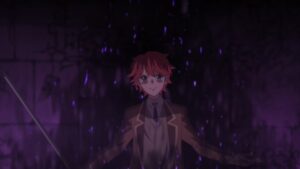
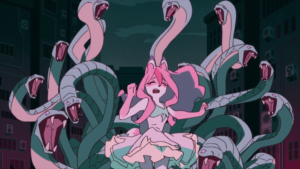
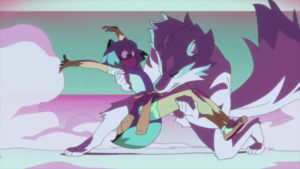
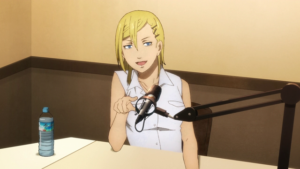
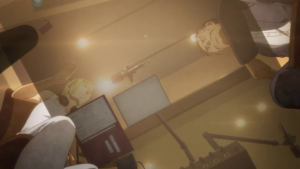

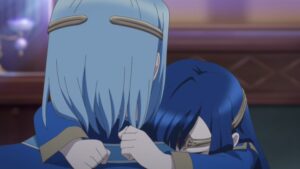
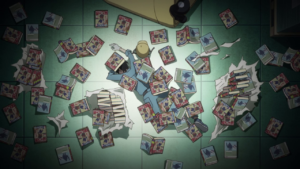


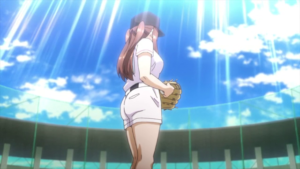
I think KLK and Witch are the best. BNA had potential but it should have gotten more episodes and better pacing.
I went and watched Kakushigoto, I needed to watch something like this as a change of pace from the types of films of watch, I couldn’t stop watching it and just finished it there in one sitting and found it equal parts funny, heartwarming and the future scene added an unexpected sense of drama that largely worked and get me going, although I did find the ending somewhat rushed and needed more fleshing out.